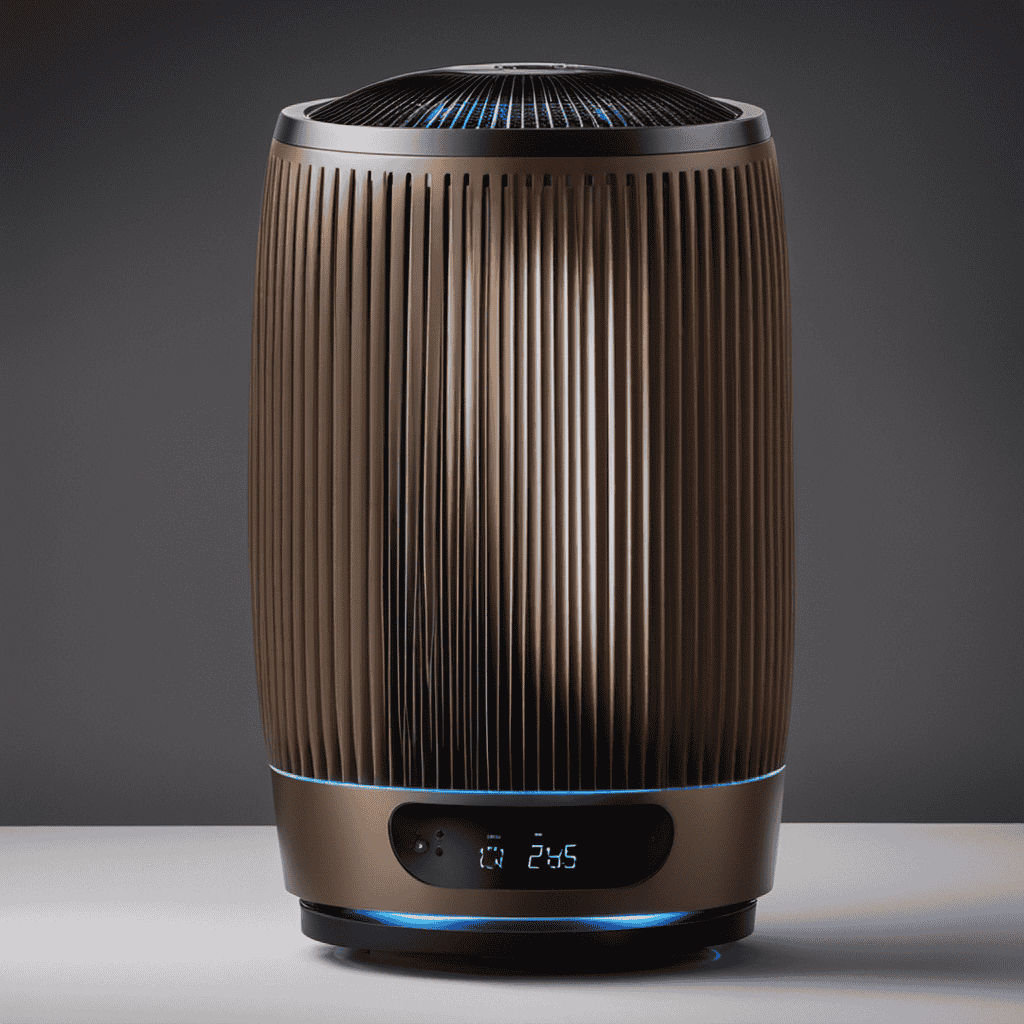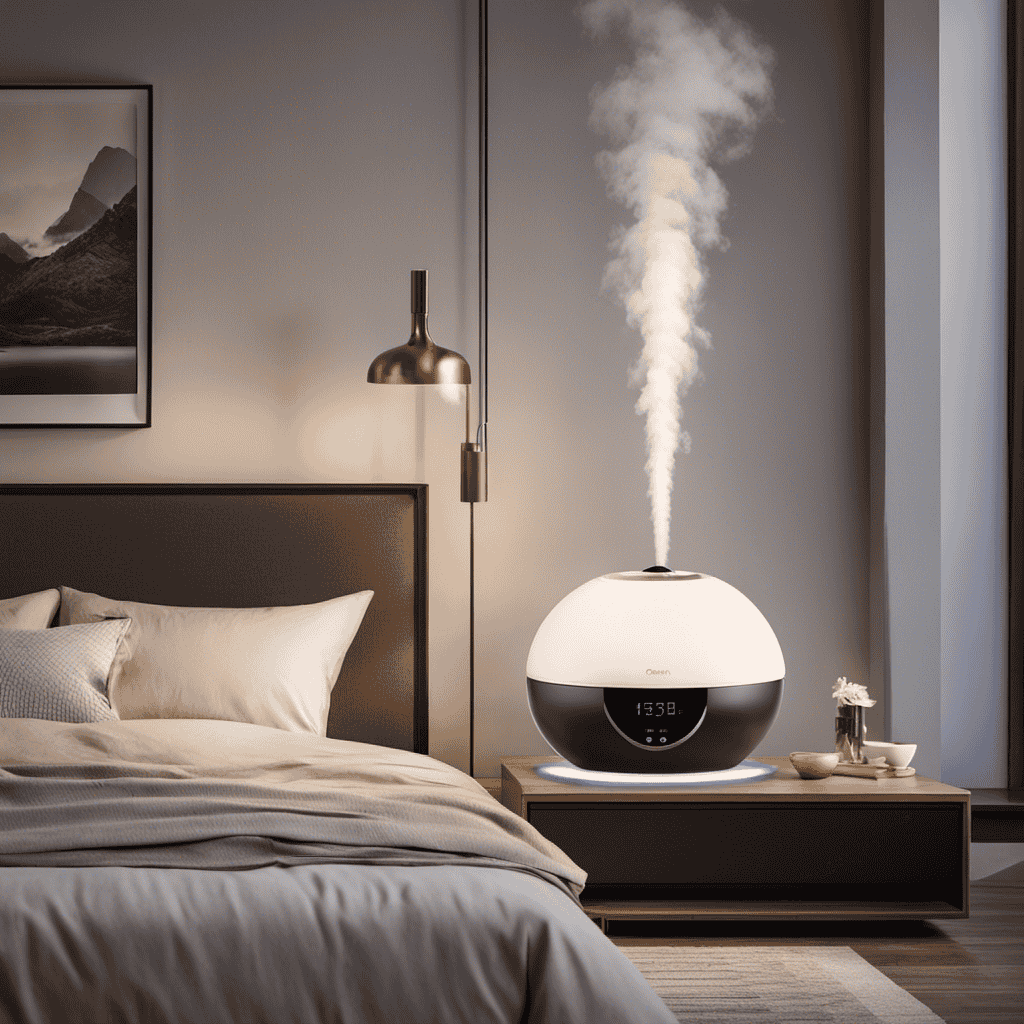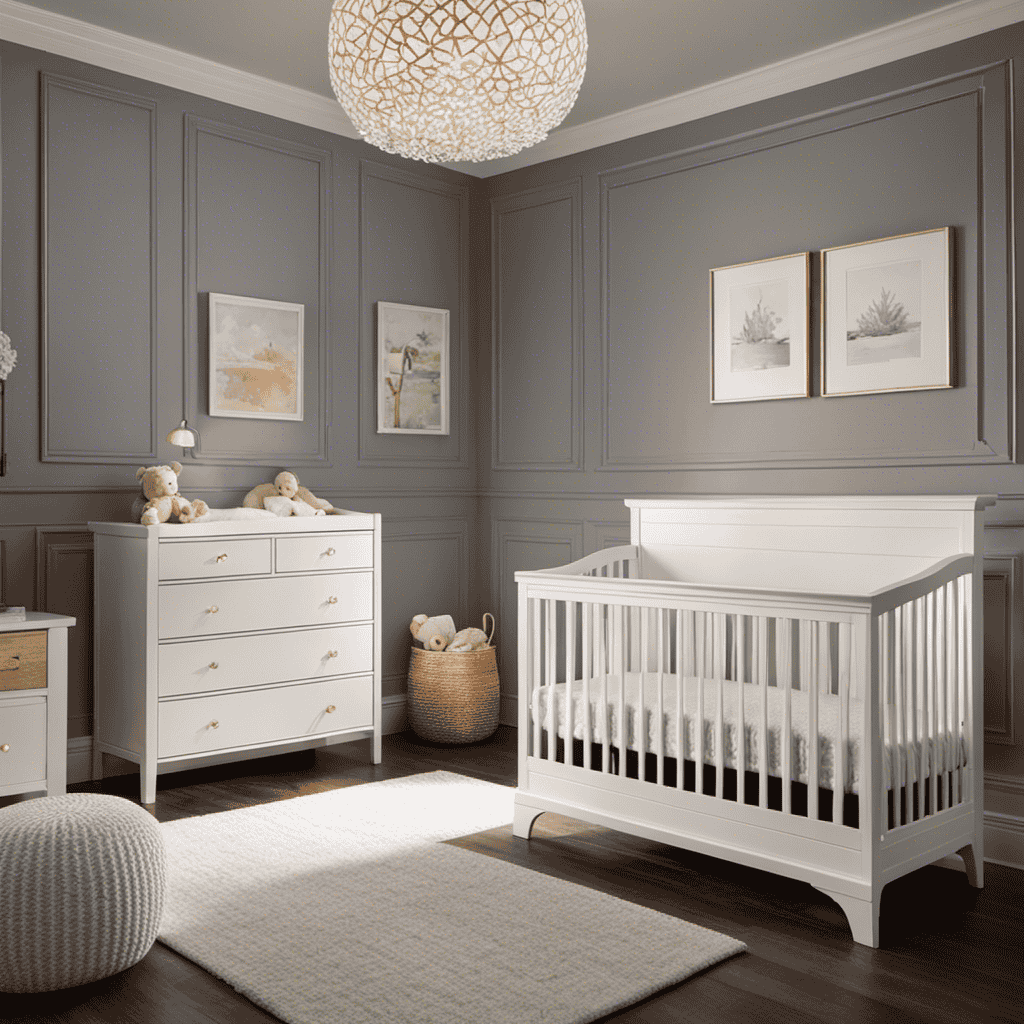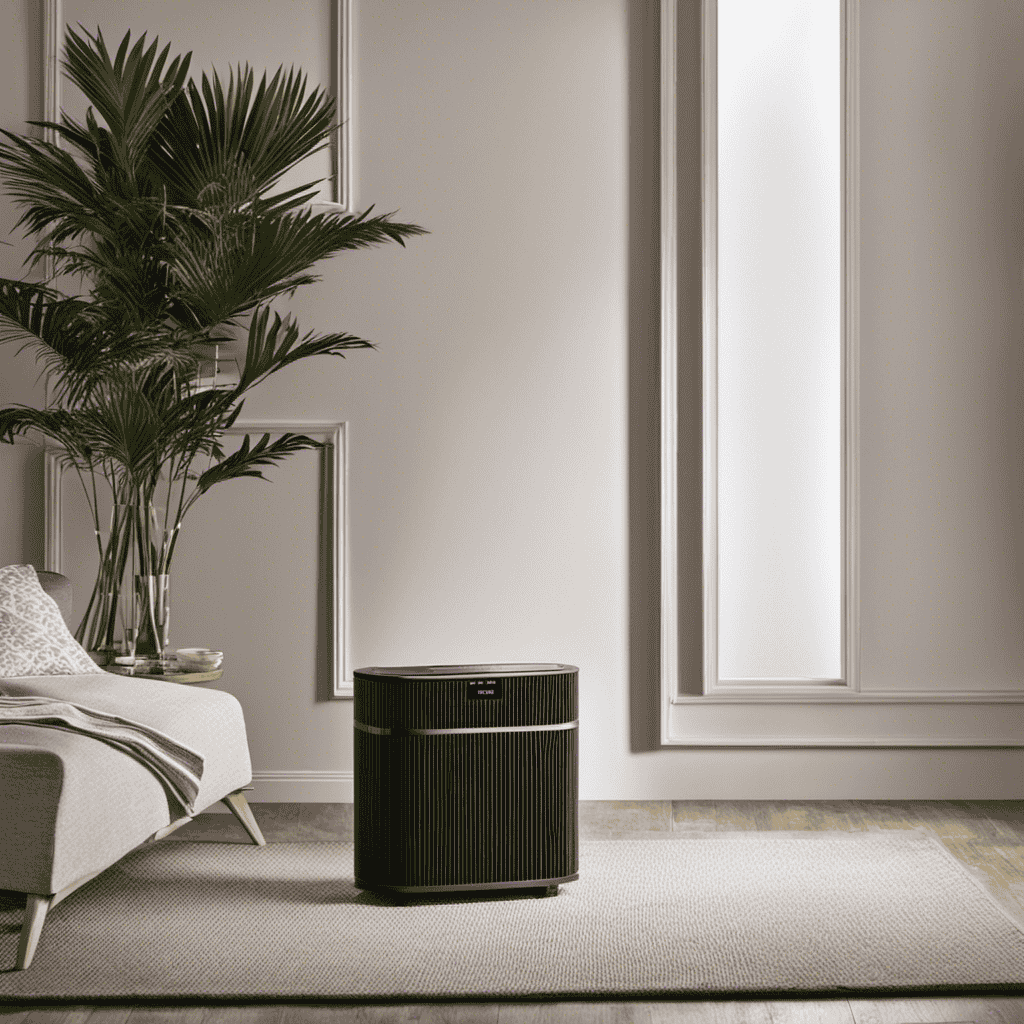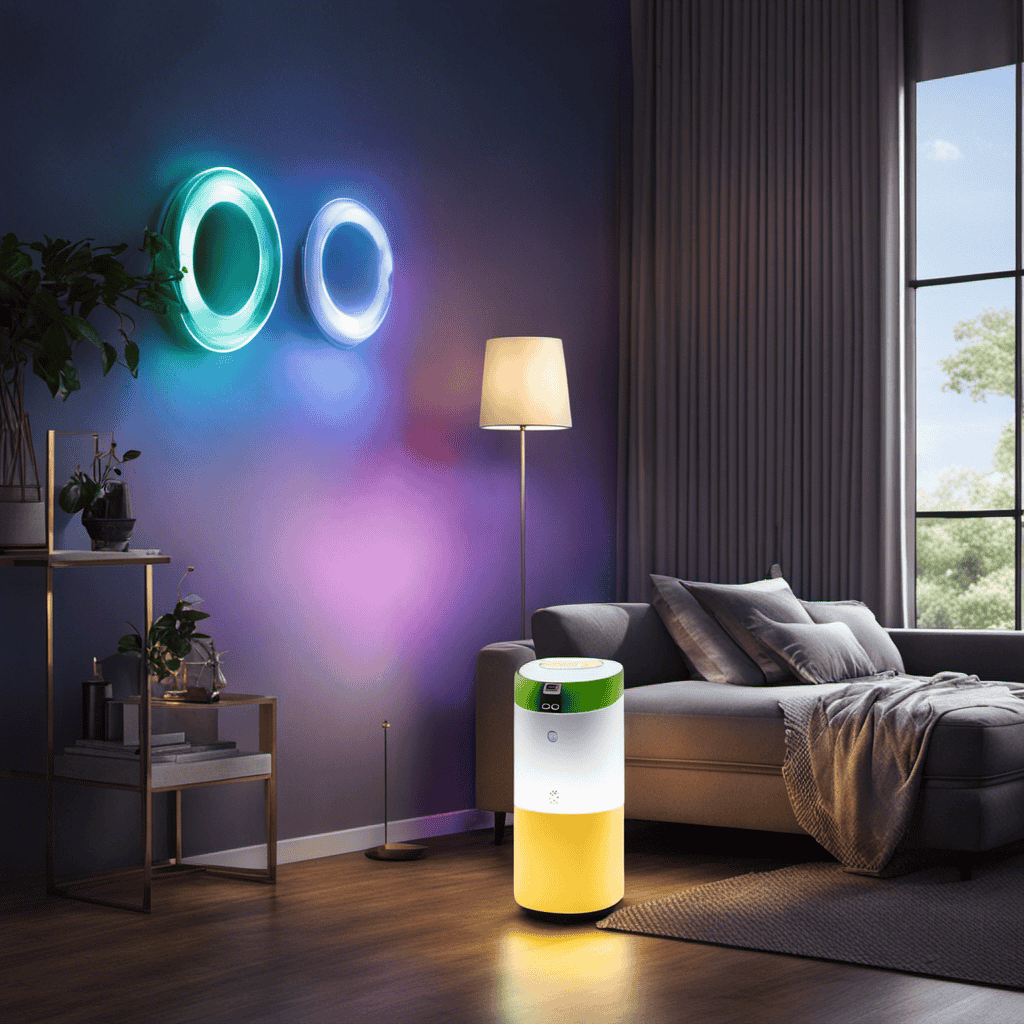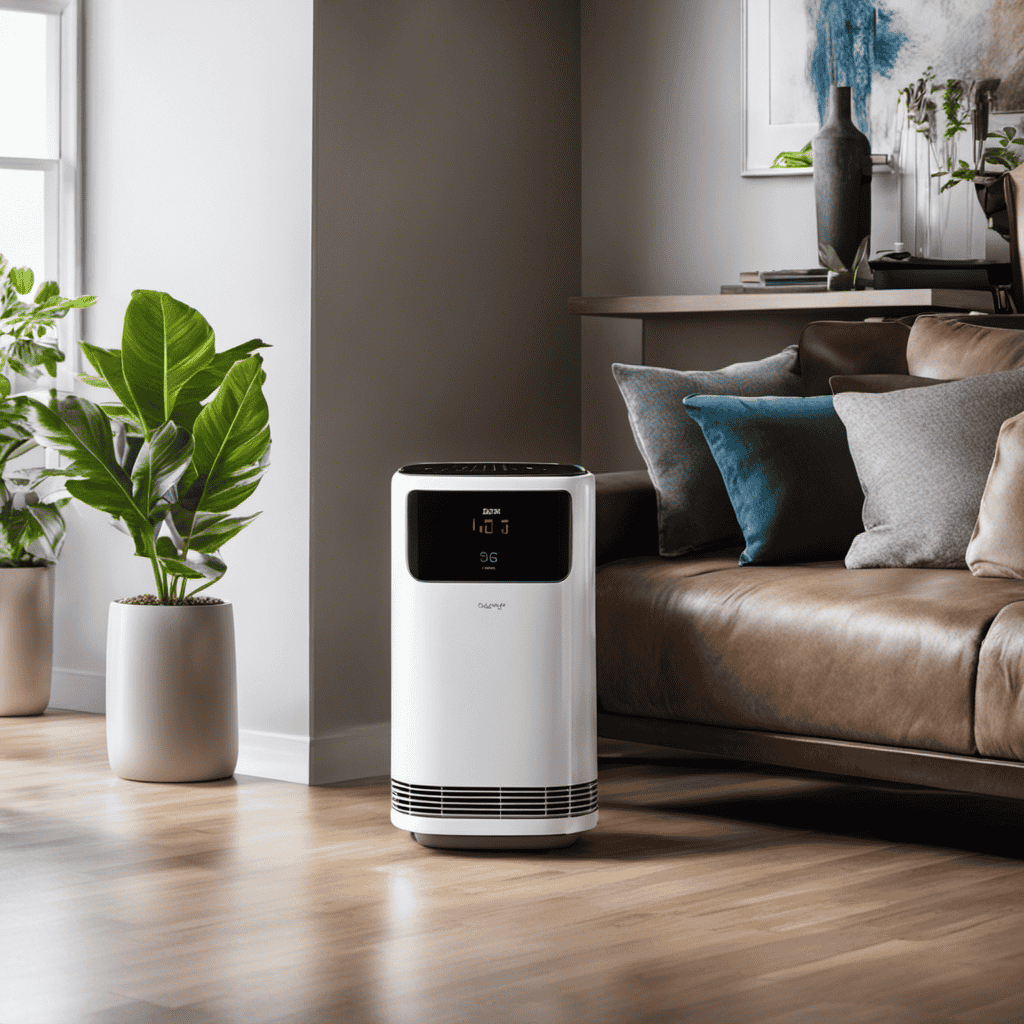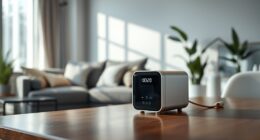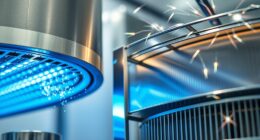**Are you curious about how air purifiers work? Let me share some insights on the fascinating science of air ionization.** Join me on this journey to uncover the secrets behind ions in air purifiers and discover the magic of cleaner, fresher air in your home. Keep reading to unlock the mysteries of ionization and revolutionize your air purification experience.
Ionization, a powerful technology used in air purifiers, works by releasing negatively charged ions into the air. These ions attach themselves to airborne particles, such as dust and allergens, making them heavier and causing them to drop out of the air.
In this article, we’ll delve into the workings, benefits, and potential risks of ionization technology in air purifiers.
Key Takeaways
- Ionization in air purifiers releases negatively charged ions into the air, which attach to airborne particles and make them heavier, causing them to drop out of the air.
- Negative ions can reduce allergies by preventing inhalation of allergens and can have positive effects on mental health by increasing serotonin production.
- Ionization effectively removes a wide range of pollutants from the air, including dust, pollen, mold spores, pet dander, smoke particles, VOCs, and bacteria.
- However, ionization technology can produce ozone and high concentrations of negative ions, which can be harmful to respiratory health and cause symptoms like respiratory irritation, headaches, dizziness, and fatigue.
The Science Behind Air Ionization
If you’re curious about how air ionization works, it’s important to understand the science behind it. Air ionizers are devices that produce negative ions, which are charged particles in the air. These negative ions have been found to have various effects on our health and well-being.
One benefit of air ionizers is their ability to reduce allergies. Negative ions attach themselves to allergens like pollen, dust, and pet dander, causing them to become too heavy to remain airborne. This prevents them from being inhaled, thus reducing the risk of allergic reactions.
In addition to their impact on allergies, negative ions have also been shown to have positive effects on mental health. They can increase the production of serotonin, a neurotransmitter that helps regulate mood and promote feelings of well-being. This can result in improved mood, reduced stress, and increased overall mental clarity.
Understanding the science behind air ionization helps us appreciate how these devices can have a positive impact on our health. By reducing allergens in the air and promoting mental well-being, air ionizers can contribute to a healthier and more comfortable living environment.
Now that we have explored the science behind air ionization, let’s delve into how ionization works in air purifiers.
How Ionization Works in Air Purifiers
Ionization works by releasing charged particles into the surrounding environment, which then attach to airborne particles and neutralize them. This process, known as ionization, is a powerful tool in air purification.
Here are some key points about the effectiveness of ionization in removing pollutants and how it compares to other air purification methods:
-
Ionization can effectively remove a wide range of pollutants, including dust, pollen, mold spores, pet dander, and smoke particles.
-
Unlike some other air purification methods, ionization does not rely on filters to capture airborne particles. Instead, it uses charged particles to neutralize and remove them from the air.
-
Ionization can help reduce the presence of harmful pollutants, such as volatile organic compounds (VOCs) and bacteria, in the air.
-
Compared to other air purification methods, ionization can be more energy-efficient and cost-effective in the long run since it does not require regular filter replacements.
Benefits of Ionization in Air Purifiers
You’ll love the benefits of ionization in keeping your indoor air clean and free from pollutants. Ionization is an important feature in air purifiers as it effectively removes a wide range of pollutants from the air. When air passes through an ionization chamber, the air molecules become charged, either positive or negative. These charged particles, known as ions, attach themselves to airborne contaminants, such as dust, allergens, and bacteria. The ions then become heavier and fall to the ground or are collected by the air purifier’s filter. This process helps to reduce the number of pollutants in the air, improving indoor air quality.
One of the key benefits of ionization is its ability to remove microscopic particles that may go undetected by other air purification methods. These particles, which can include viruses and bacteria, can lead to respiratory issues and other health problems. Ionization effectively neutralizes these harmful particles, ensuring that you and your family breathe in clean and healthy air.
Another advantage of ionization is its ability to eliminate odors. Ionizers release negative ions that attach themselves to odor-causing molecules, neutralizing them and leaving your indoor air smelling fresh and clean.
Ion Vs. Non-Ion Air Purifiers: What’s the Difference
When considering an air purifier, it’s important to understand the difference between ion and non-ion options. Air purifiers use various methods to purify the air in your surroundings, and the effectiveness of these methods can vary.
Let’s take a closer look at the key differences between ion and non-ion air purifiers:
-
Ion Air Purifiers: These devices use ionization to clean the air. They release negatively charged ions into the air, which attach to airborne particles, making them heavier and causing them to fall to the ground or stick to surfaces. This process effectively removes pollutants from the air, improving its quality.
-
Non-Ion Air Purifiers: Unlike ion air purifiers, non-ion options utilize different techniques such as filters or UV light to clean the air. Filter-based purifiers trap particles in a filter media, preventing them from circulating in the air. UV light purifiers, on the other hand, use ultraviolet light to kill bacteria, viruses, and mold spores.
-
Effectiveness Comparison: When comparing the effectiveness of ion and non-ion air purifiers, it’s important to consider the specific pollutants you want to target. Ion air purifiers are effective against particles like dust, pollen, and pet dander, but they may not be as effective against gases and odors. Non-ion purifiers with filters can capture a wider range of particles, including gases and odors, making them more versatile in purifying the air.
Understanding the Potential Risks of Ionization Technology
Understanding the potential risks of using ion technology is essential for making an informed decision about air purification methods. While ionization technology has been praised for its ability to remove particles from the air, it is important to consider the potential health hazards and safety concerns associated with this method.
One potential health hazard of ion technology is the production of ozone. Ozone is a gas that can irritate the respiratory system and cause breathing difficulties. High levels of ozone can be especially harmful to individuals with asthma or other respiratory conditions. It is important to ensure that the ionizer in the air purifier does not produce excessive amounts of ozone.
Another safety concern is the production of negative ions. While negative ions are generally harmless, high concentrations of these ions can lead to negative effects on human health. Some studies have suggested that high levels of negative ions in the air can cause headaches, dizziness, and fatigue.
Furthermore, the release of charged particles into the air can also lead to the formation of harmful byproducts. These byproducts, known as secondary pollutants, can include harmful chemicals and particulate matter. Inhaling these pollutants can have detrimental effects on respiratory health.
Frequently Asked Questions
Can Ionization Technology in Air Purifiers Help Eliminate Viruses and Bacteria From the Air?
Yes, ionization technology in air purifiers can help eliminate viruses and bacteria from the air. It works by releasing negative ions into the air, which attach to the positively charged particles such as dust, allergens, and microorganisms. This causes them to become heavy and fall to the ground or get trapped in the purifier’s filter.
However, it’s important to note that long-term exposure to ionizers may have potential side effects, such as increased ozone levels, which can be harmful to human health.
Are Ionizers Safe to Use Around Pets and Children?
Yes, ionizers are generally safe to use around pets and children. While ionization technology in air purifiers can help reduce allergens in the air, it is important to note that there can be potential side effects.
These include the production of ozone, which can be harmful in high concentrations. However, most ionizers on the market today are designed to emit safe levels of ozone. It is always a good idea to follow the manufacturer’s instructions and guidelines to ensure the safe use of ionizers around pets and children.
How Long Does It Take for Ionization Technology to Freshen the Air in a Room?
Efficiency of ionization technology in air purifiers can vary depending on the size of the room. The larger the room, the longer it may take for the technology to freshen the air.
Ionization technology works by releasing negatively charged ions into the air, which attach to positively charged particles like dust and allergens, causing them to fall to the ground.
However, it’s important to note that ionization technology does not remove these particles from the air like a filter does.
Can Ionizers Remove Odors From the Air, Such as Pet Smells or Cooking Odors?
Ionizers in air purifiers are effective at removing odors, such as pet smells or cooking odors. These devices use ionization technology to release negatively charged ions into the air. These ions attach to positively charged particles, like odor molecules, causing them to become heavy and fall out of the air. This process effectively eliminates unpleasant smells from your surroundings.
Additionally, ionizers can also help reduce allergens in the air, providing relief for those with allergies. The benefits of ionization technology in air purifiers are numerous and can greatly improve indoor air quality.
Do Ion Air Purifiers Require Any Maintenance or Filter Replacements?
For ion air purifiers, maintenance requirements include regular filter replacement. Filters in ion air purifiers help to capture and remove particles from the air, such as dust, pollen, and pet dander. Over time, these filters can become clogged and less effective, so it is important to replace them according to the manufacturer’s guidelines.
Regular maintenance, including filter replacement, ensures that the ion air purifier continues to effectively clean the air in your space.
Conclusion
In conclusion, air purifiers with ionization technology offer a multitude of benefits in improving indoor air quality. By emitting negative ions, these purifiers effectively neutralize and eliminate airborne allergens, pollutants, and odors.
It is fascinating to note that studies have shown that ionization technology can reduce the concentration of harmful particles in the air by up to 95%. This statistic highlights the impressive efficiency of ion air purifiers in creating a healthier and cleaner environment for us to breathe in.
